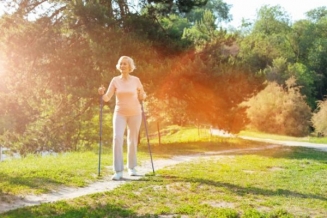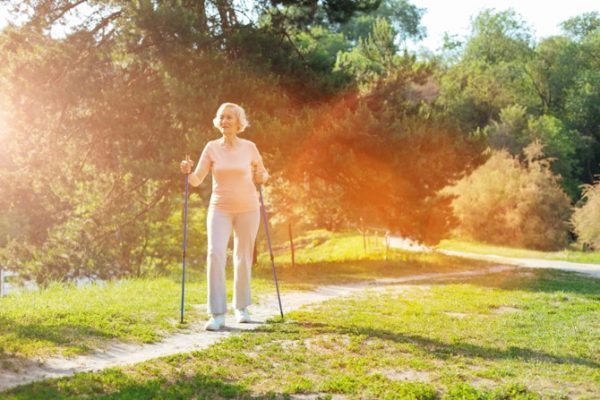 Image Courtesy: https://oryon.co.uk/blog/national-walking-month/
Image Courtesy: https://oryon.co.uk/blog/national-walking-month/It’s National Walking Month this month, and with few other options for what to do outside the home, we wanted to show the benefits of walking, whether you’re out in the countryside or in the middle of the city.
Although we don’t know what is going to be announced on Sunday, we do know that life will remain unusual, and that we certainly won’t be going back to our previous, active lives anytime soon. With the current restrictions on leaving your home, activity levels have fallen despite a general increase in free time. This is worrying for doctors and healthcare professionals, who anticipate an unprecedented rise in pain issues, including back conditions, knee pain, hip pain, degenerative joints and much more.
So how can we alleviate doctors’ fears of poor musculoskeletal health post-lockdown?
We talked to Mr Rishi Chana, Consultant Hip & Knee Surgeon, to get his insight into why walking is such an essential activity for everyone, and especially for those who may have hip or knee issues.
Who should be using their exercise time to engage in walking?
Walking is better for those with medical conditions where increased stress on the heart and circulation are best avoided. Those with risk of heart attack and stroke with high blood pressure may be better off starting with a walk and then increasing the exercise load with some cardiovascular and resistance training as their health improves.
Diabetic blood sugar control is also improved with regular exercise and this improves and strengthens your immune system.
Arthritis sufferers usually have pain and stiffness that limit exercise. Regular walking will help keep this in control and is crucial in maintaining their ability to keep mobile and avoid stiff joints.
Bone health is also affected by regular exercise and walking is a good form of controlled stimulation of stress on the bone, ensuring that strength and density are maintained. Regular stimulation of load bearing activity like walking and attention to good health, calcium intake and avoidance of smoking and alcohol are also important. Exposure to sunlight for Vitamin D production is also vital and a further advantage to walking outside with the good weather.
So how can people who want to walk protect themselves against any injury?
Before you start walking for an hour every day, take a moment to make sure your body can handle it.
The main muscle groups of the legs are in a constant fight against each other to produce a balance, much like a pulley system. When one group overpowers another, the body mechanical alignment goes out of kilter and pain results. Attention to the posterior structures such as hamstrings and calf muscle tightness is often overlooked, but keeping these stretched out will help and also avoid heel pain, commonly experienced in walkers and runners alike. Warming up and stretching before and after with attention to all muscle groups will help avoid injury.
One of the main causes of injury in runners and walkers is due to poor core gluteal (buttock) muscle strength. Studies have shown that the big five main problems of walking and pain are linked to poor buttock muscle condition and functional strength. Have a look at the images below and try out the clinically proven exercises to go hand-in-hand with walking.
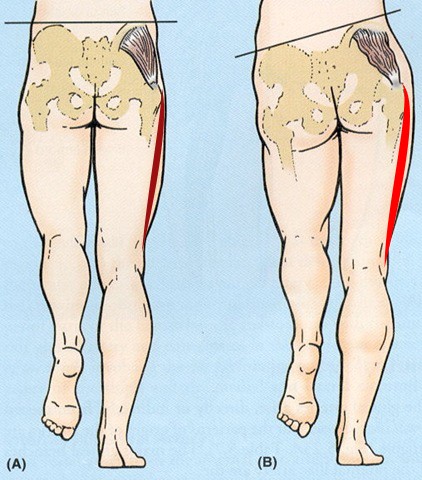 Image Courtesy: https://oryon.co.uk/blog/national-walking-month/
Image Courtesy: https://oryon.co.uk/blog/national-walking-month/
Figure showing A), good gluteal muscle function and balance pelvis at a level position. B), Poor gluteal function, pelvis lateral tilt and ITB and Trochanteric bursa overload. Check out Running Writings for more.
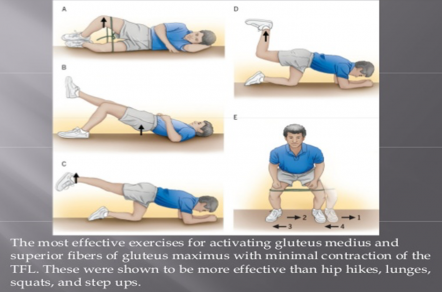 Image Courtesy: https://oryon.co.uk/blog/national-walking-month/
Image Courtesy: https://oryon.co.uk/blog/national-walking-month/
These are very effective buttock muscle exercises for alleviating lateral hip and outer thigh pain. Do any four of these for 20 repetitions, 2 times a day.
How does walking help the knee?
The main advantage is that walking is a low impact activity. Arthritis in the lower limbs (foot, ankle, knee and hip), as well as lower back degeneration, is very sensitive to repetitive impact. By wearing appropriate footwear suited to your foot alignment and inner arch with good sole cushioning and walking, you may reduce the impact and this will help with pain relief and distance or time you are able to walk for.
If you suffer from a knee condition which impairs your ability to walk for any sustained distance, one thing to consider would be wearing a brace that corrects your knee alignment and offloads the worn part of the knee.
Several braces are now available that will offload the worn section and use the parts that still have cartilage. This allows for excellent function and pain relief without the need for tablets, injections or surgery. It is perfectly safe, removable and does not need to be worn all the time.
I’m a certified provider for these braces – if you’re interested, do sign up to my newsletter.
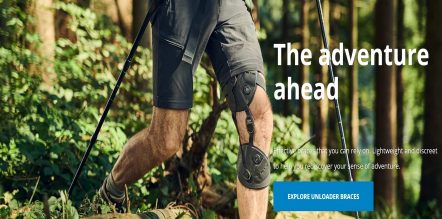 Image Courtesy: https://oryon.co.uk/blog/national-walking-month/
Image Courtesy: https://oryon.co.uk/blog/national-walking-month/
Braces to help keep knee function and reduce pain
How does walking help the hip?
Walking is better for the hip as it decreases the risk of an over-striding injury. The difference between running and walking are that in walking, both feet are always in contact with the ground. When running, one leg is in the air allowing for a longer stride and heel strike impact that can lead to labral tears within the hip or even cartilage wear.
This can feel like sharp pain in the groin with a feeling of something moving inside. This is usually followed by dull aching after wards due to the hip joint bones impacting on each other. Solution: take shorter strides and control the speed and number of steps you take in a minute.
In walking, a slower cadence (number of steps per minute) and the stride length are reduced and more controlled. To ensure that walking does not cause lateral thigh pain (common in ITB pain and trochanteric bursitis pain), maintaining a wider in-line gait, avoiding cross-over across your body and excess twisting of the knee and lower limb rotating on the ankle, will also help. This may avoid patella-femoral kneecap pain issues as well.
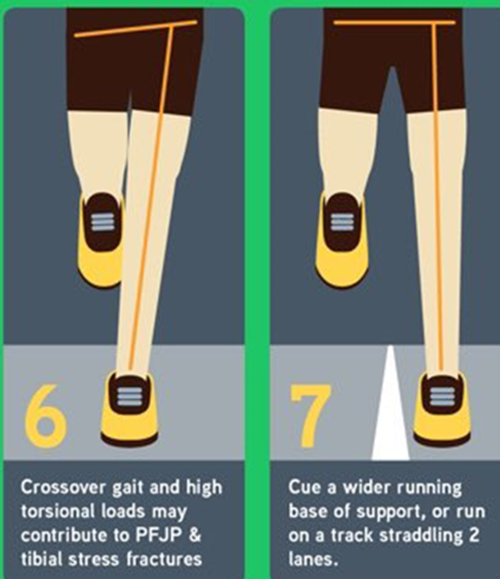 Image Courtesy: https://oryon.co.uk/blog/national-walking-month/
Image Courtesy: https://oryon.co.uk/blog/national-walking-month/
Avoid any crossover to minimise the risk
Pelvis position is important. If the pelvis is too flexed or extended, this will cause pain and injury. The position is affected by how good the gluteal buttock muscles are in function and how tight the hamstring muscles as well as your lumbar spine muscles are and posture.
For any further information and support please subscribe to my newsletter or feel free to reach out to me via my website.

